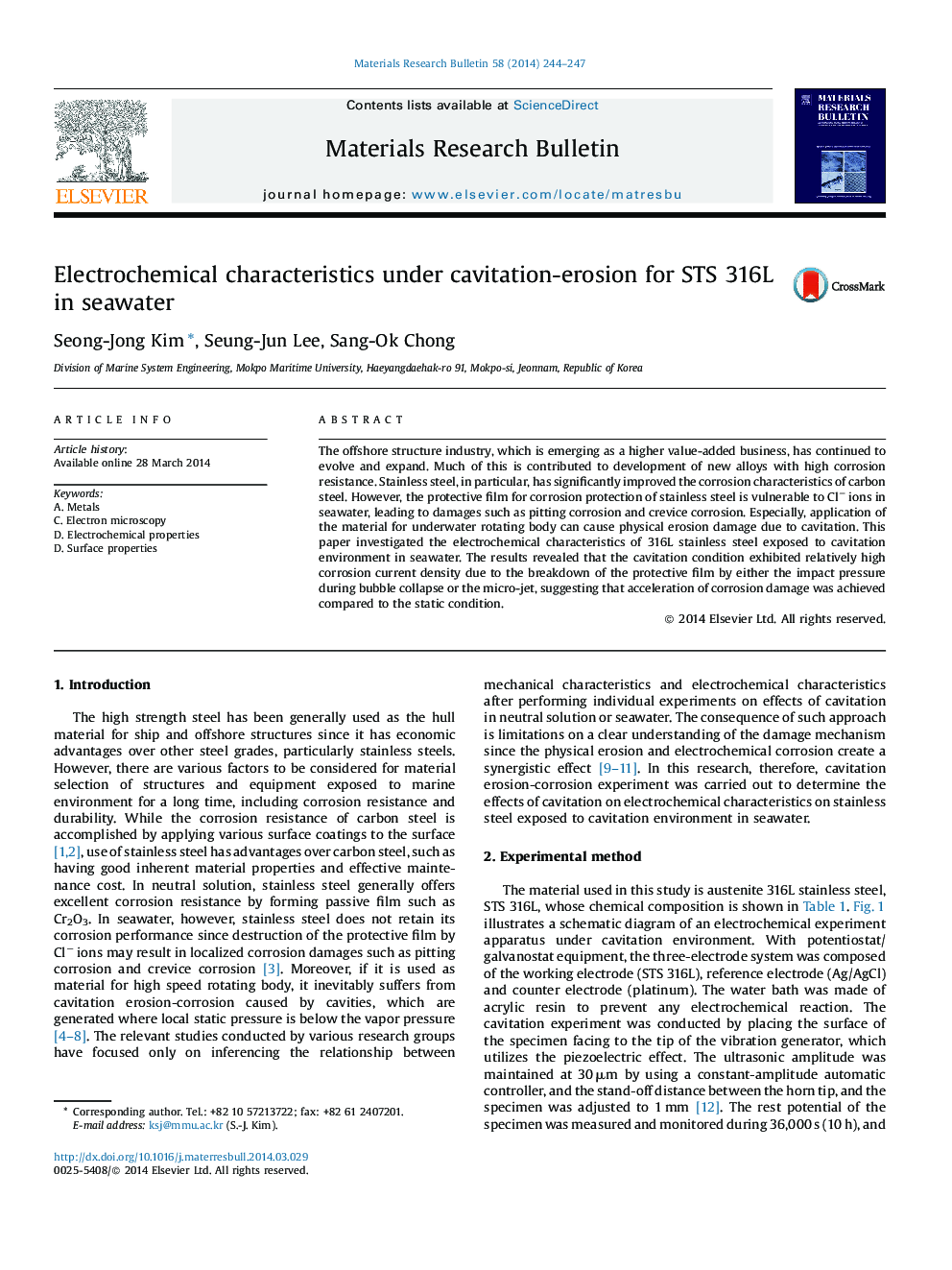| کد مقاله | کد نشریه | سال انتشار | مقاله انگلیسی | نسخه تمام متن |
|---|---|---|---|---|
| 1488343 | 1510717 | 2014 | 4 صفحه PDF | دانلود رایگان |

• We examined electrochemical characteristics of STS 316L exposed to cavitation.
• In potential measurement, active potential was measured under cavitation condition.
• Passive film was eliminated by cavity bubble collapse and acceleration of corrosion.
• Cavitation condition showed higher corrosion current density than static condition.
The offshore structure industry, which is emerging as a higher value-added business, has continued to evolve and expand. Much of this is contributed to development of new alloys with high corrosion resistance. Stainless steel, in particular, has significantly improved the corrosion characteristics of carbon steel. However, the protective film for corrosion protection of stainless steel is vulnerable to Cl− ions in seawater, leading to damages such as pitting corrosion and crevice corrosion. Especially, application of the material for underwater rotating body can cause physical erosion damage due to cavitation. This paper investigated the electrochemical characteristics of 316L stainless steel exposed to cavitation environment in seawater. The results revealed that the cavitation condition exhibited relatively high corrosion current density due to the breakdown of the protective film by either the impact pressure during bubble collapse or the micro-jet, suggesting that acceleration of corrosion damage was achieved compared to the static condition.
Figure optionsDownload as PowerPoint slide
Journal: Materials Research Bulletin - Volume 58, October 2014, Pages 244–247